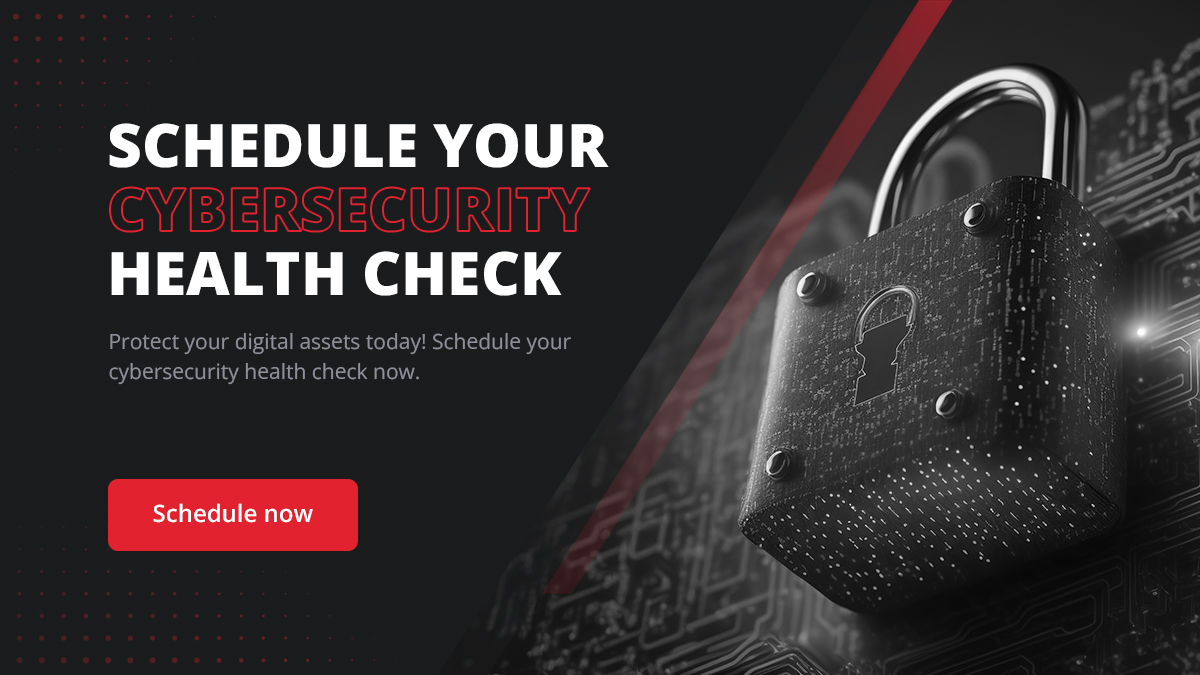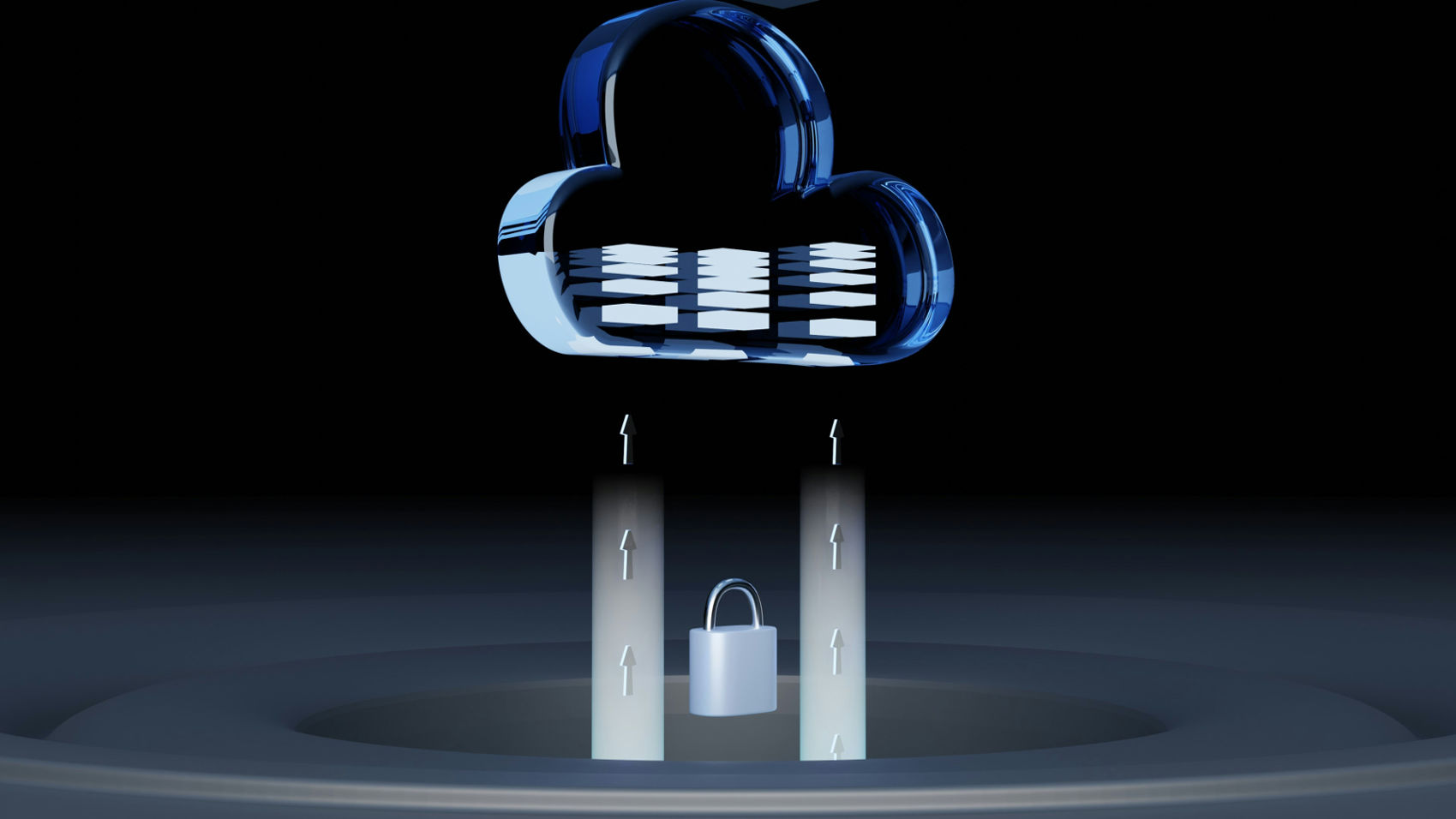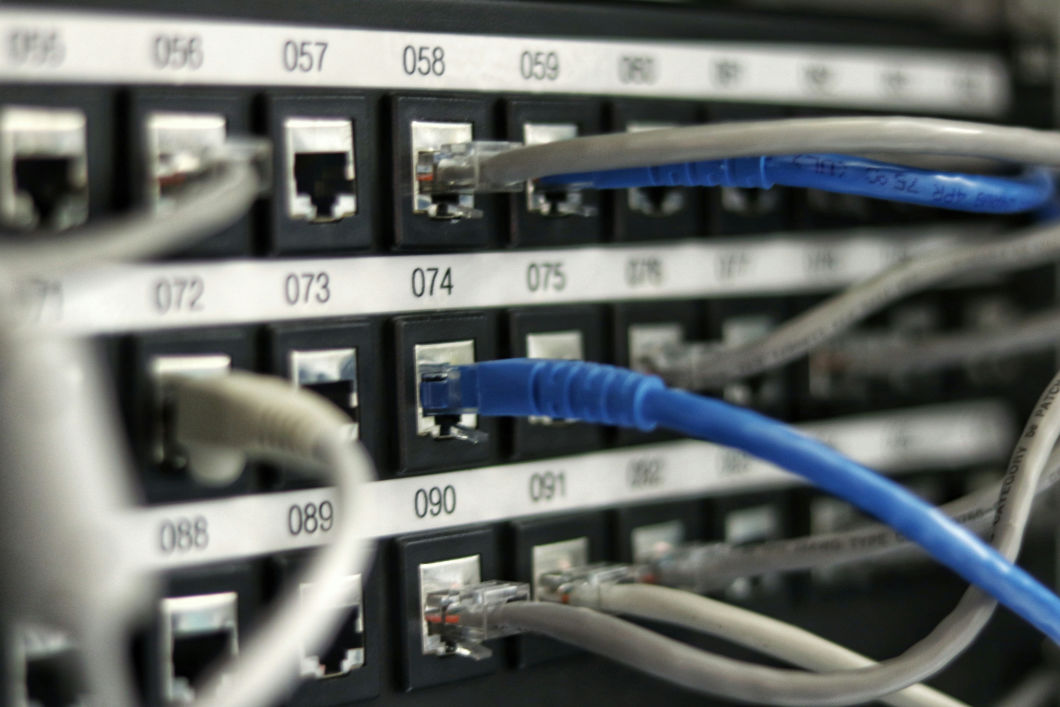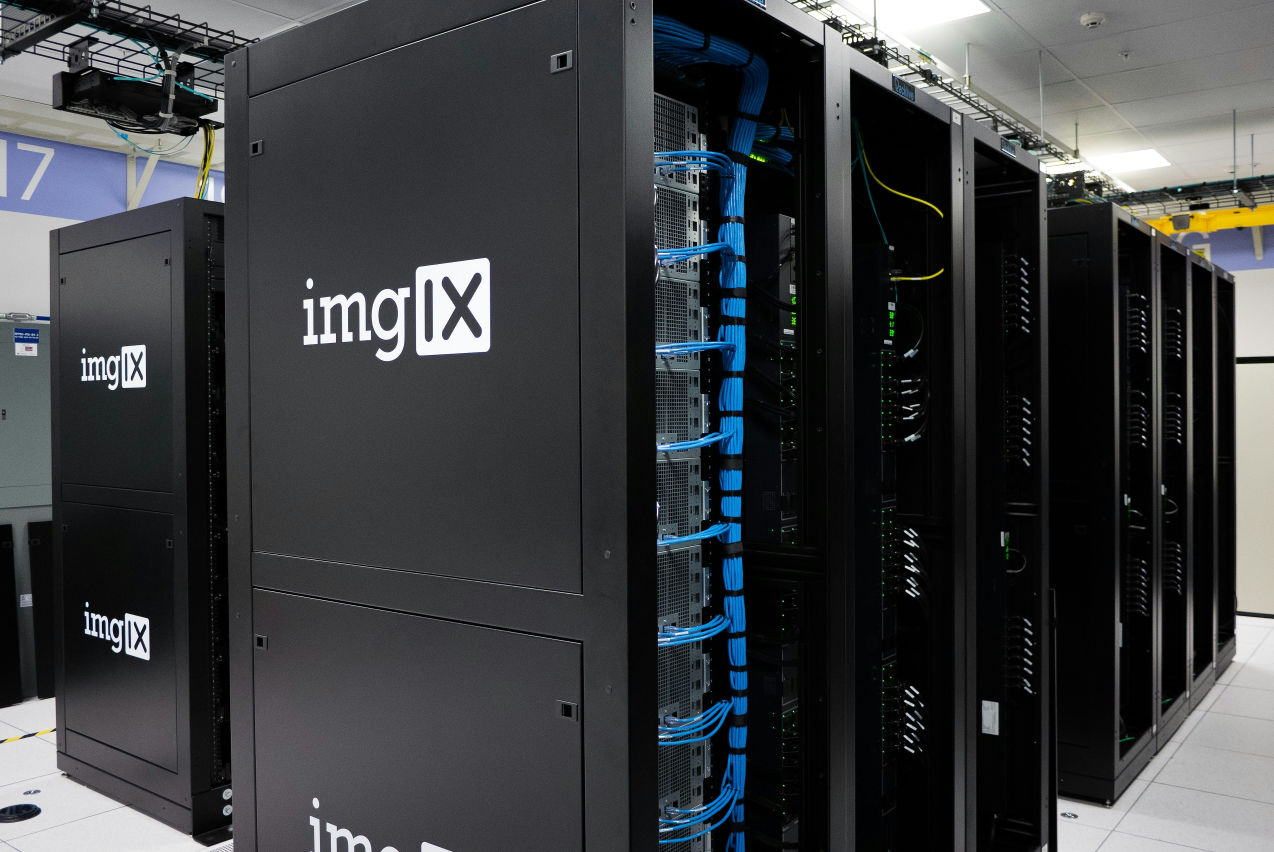Implement Secure Browsing with Powerful SSL Decryption

SSL Decryption: Benefits and Challenges
Secure Sockets Layer, commonly termed as SSL encryption, is the cornerstone of online communication, safeguarding our data and privacy. Yet, while SSL encryption offers robust protection against cyber threats, it also presents unique challenges, especially for organizations needing to monitor and secure their network traffic. Enter SSL decryption—a critical process that allows authorized entities to inspect encrypted traffic without compromising the integrity of the data.
Most companies fail at SSL decryption because they focus only on inbound threats and overlook outbound ones. Given that 70% of web traffic is encrypted, it’s crucial to inspect outbound traffic to fully leverage a firewall’s capabilities. Imagine allowing a knight in full armor to leave a castle without checking under the armor to ensure he's not carrying the king’s future war plans. This analogy underscores the importance of outbound traffic inspection to prevent potential compromises.
What is SSL Decryption?
SSL decryption is the process of intercepting and decoding encrypted SSL traffic to reveal the data in a readable format. As more internet traffic becomes encrypted, organizations face significant hurdles in monitoring, analyzing, and protecting their network environments. SSL decryption is essential for network security tools to function effectively, providing visibility into encrypted traffic and enabling proactive defense mechanisms against sophisticated cyber threats.
Definition and Purpose of SSL Decryption
SSL decryption involves the process of converting SSL/TLS encrypted data back into its original, readable form. This is achieved through various methods, typically involving the interception of encrypted data streams, decryption using relevant keys, and re-encryption before forwarding the traffic to its intended destination. The primary purpose of SSL decryption is to provide visibility into encrypted traffic, allowing security systems to inspect and analyze the data for malicious activities, policy violations, and other potential security threats.
The widespread adoption of SSL/TLS protocols has significantly increased the volume of encrypted traffic traversing the internet. While this encryption is vital for protecting data from unauthorized access, it also obscures the contents from legitimate security tools. SSL decryption bridges this gap by enabling these tools to perform their functions effectively, ensuring that encrypted traffic is not used as a cloak for malicious activities.
Importance of SSL Decryption in Ensuring Network Security
SSL decryption plays a crucial role in maintaining robust network security. With an estimated 95% of internet traffic now encrypted, the inability to inspect SSL/TLS traffic could leave significant blind spots in an organization's security posture. These blind spots can be exploited by attackers to deliver malware, exfiltrate data, or conduct other nefarious activities undetected.
By decrypting SSL traffic, organizations can ensure that their security systems—such as firewalls, intrusion detection and prevention systems (IDS/IPS), and data loss prevention (DLP) solutions—have full visibility into all network communications. This visibility is essential for detecting and mitigating threats in real time. Furthermore, SSL decryption helps enforce security policies and compliance requirements by allowing for the inspection and filtering of encrypted content based on organizational policies and regulatory standards.
Despite its critical importance, SSL decryption also introduces several challenges, including potential performance impacts, privacy concerns, and the complexity of managing decryption processes and keys. Balancing these challenges with the need for comprehensive security is a complex but necessary task for modern organizations seeking to protect their networks and data effectively.
Understanding SSL/TLS
Securing online communication is more critical than ever. SSL (Secure Sockets Layer) and its successor TLS (Transport Layer Security) are cryptographic protocols designed to communicate securely over a computer network. This article delves into the intricacies of SSL/TLS, explaining how these protocols function, the steps involved in decryption, the role of SSL certificates, and the evolution of different versions of SSL/TLS protocols. By understanding these concepts, you can appreciate the mechanisms that keep our digital interactions safe and secure.
How SSL/TLS Protocols Work to Secure Communication
At the core of SSL/TLS protocols is the goal of ensuring that data transmitted between a client and a server is encrypted and thus secure from eavesdropping and tampering. The process begins with a handshake, which is a series of steps that both parties go through to establish a secure connection.
During the handshake, the client sends a "ClientHello" message to the server, which includes information about the SSL/TLS versions and cipher suites it supports. The server responds with a "ServerHello" message, specifying the chosen protocol and cipher suite. This initial exchange is crucial as it sets the parameters for secure communication.
Following this, the server sends its digital certificate to the client, including its public key. The client verifies this certificate against a trusted Certificate Authority (CA) to ensure it is authentic. If the certificate is valid, the client generates a "pre-master secret" and encrypts it with the server’s public key. This pre-master secret is then sent to the server, where it is decrypted using the server’s private key. Both the client and server use this secret to independently generate session keys, which will be used for encrypting and decrypting the data exchanged during the session.
This encryption process ensures that even if an attacker intercepts the communication, they cannot decipher the data without the session keys. SSL/TLS protocols also provide data integrity checks using a Message Authentication Code (MAC) to prevent tampering. Combining these encryption and integrity measures provides a robust security framework for online communications.

Steps in the Decryption Process
Decryption in SSL/TLS involves converting encrypted data back into its original, readable format using a secret key. This process is essential for the secure transmission of data over the Internet. The decryption steps are closely tied to the encryption process and occur after establishing the secure connection.
- Receiving the Encrypted Data: The server or client receives data encrypted with the session key generated during the SSL/TLS handshake. This encrypted data is typically sent in packets over the network.
- Decrypting with the Session Key: The recipient uses the session key to decrypt the data. Since both parties share the same session key (derived from the pre-master secret), they can decrypt each other's messages. This symmetric encryption process ensures that the data remains secure during transit.
- Verifying Data Integrity: After decryption, the recipient checks the data integrity using the MAC. This involves generating a MAC from the decrypted data and comparing it with the MAC sent with the data. If they match, it confirms that the data has not been tampered with.
- Reading the Plaintext: Once the data is decrypted and verified, it is converted back into plaintext. This plaintext is the original data sent by the other party before it was encrypted.
These decryption steps ensure that only the intended recipient, who possesses the correct session key, can read the transmitted data. The robust encryption and decryption mechanisms provided by SSL/TLS are fundamental in maintaining the confidentiality and integrity of online communications.
Role of SSL Certificates in Establishing Trust
SSL certificates play a pivotal role in the SSL/TLS protocols by establishing trust between the client and the server. These digital certificates are issued by trusted entities known as Certificate Authorities (CAs) and are proof of the server’s identity.
When a server presents its SSL certificate during the handshake process, it provides the client with its public key and information about its identity. The client verifies the certificate's authenticity by checking it against a list of trusted CAs pre-installed in the client's operating system or browser. If the certificate is issued by a trusted CA and is valid, the client can be confident that it is communicating with the legitimate server and not an imposter.
SSL certificates also enable the encryption of data by providing the public key used to encrypt the pre-master secret. This step is crucial for generating the session keys that will be used throughout the communication session. Without a valid SSL certificate, the handshake process cannot proceed, and the client may refuse to establish a connection.
There are various types of SSL certificates, including domain-validated (DV), organization-validated (OV), and extended validation (EV) certificates, each providing different levels of validation. DV certificates confirm that the owner controls the domain, OV certificates validate the organization's identity, and EV certificates require the most stringent validation, including legal verification of the organization's existence. The green padlock icon in the browser's address bar signifies that the website has a valid SSL certificate, enhancing user trust and confidence in the site's security.
Different Versions of SSL/TLS Protocols
Since their inception, SSL/TLS protocols have undergone several iterations, each improving security and addressing vulnerabilities found in previous versions.
- SSL 1.0, 2.0, and 3.0: SSL 1.0 was never publicly released due to significant security flaws. SSL 2.0, released in 1995, introduced basic encryption but had multiple vulnerabilities that compromised its security. SSL 3.0, introduced in 1996, addressed many of these issues and became widely adopted. However, it too eventually became vulnerable to attacks, leading to its deprecation in 2015.
- TLS 1.0 and 1.1: TLS 1.0, published in 1999, was the first version to succeed SSL and aimed to improve upon its predecessor by offering better security and performance. TLS 1.1, released in 2006, introduced further enhancements, including protection against certain types of attacks. Despite their improvements, both versions have been deprecated due to advancing security threats and the availability of more secure protocols.
- TLS 1.2: Introduced in 2008, TLS 1.2 brought significant advancements in cryptographic algorithms and performance. It supports modern, robust encryption methods and has become the standard for secure Internet communications. TLS 1.2 is widely adopted today and remains the backbone of secure connections.
- TLS 1.3: The latest version, TLS 1.3, was published in 2018 and offers even greater security and efficiency. It simplifies the handshake process, reducing the number of round-trips required to establish a connection, which improves performance. TLS 1.3 also removes outdated and insecure cryptographic algorithms, ensuring higher security.
Each new version of SSL/TLS reflects the evolving landscape of cybersecurity, addressing past vulnerabilities and enhancing the protocols' ability to provide secure communications. As threats continue to evolve, so too will the protocols that protect our data, ensuring that SSL/TLS remains a cornerstone of online security.
The Need for SSL Decryption
Encryption plays a pivotal role in securing data transmission across the internet. Secure Sockets Layer (SSL) and its successor, Transport Layer Security (TLS), are cryptographic protocols designed to secure communications between web servers and clients. They ensure that data exchanged over the internet is encrypted and, therefore, protected from eavesdropping and tampering. However, as encryption becomes more ubiquitous, it also presents significant challenges for cybersecurity. This has led to the growing need for SSL decryption in network security practices.
Increasing Prevalence of Encrypted Threats
The proliferation of SSL/TLS encryption is not just a boon for data privacy but also a potential haven for cybercriminals. Encrypted traffic can obscure malicious activities, allowing threats to hide in plain sight. According to a 2023 report by the Cybersecurity and Infrastructure Security Agency (CISA), over 70% of malware uses encryption to avoid detection. Cyber attackers exploit SSL/TLS to mask their communications, making traditional security tools, which rely on clear text data, ineffective. This trend underscores the critical need for SSL decryption capabilities to inspect encrypted traffic and identify hidden threats.
Compliance with Security Standards and Regulations
Regulatory bodies and industry standards increasingly mandate the inspection of encrypted traffic as part of comprehensive cybersecurity frameworks. For instance, the Payment Card Industry Data Security Standard (PCI DSS) requires organizations handling payment card data to monitor and protect all traffic, including encrypted streams. Similarly, the General Data Protection Regulation (GDPR) emphasizes the need for safeguarding personal data, which often necessitates inspecting encrypted communications to prevent data breaches. SSL decryption helps organizations meet these stringent compliance requirements by allowing them to monitor and secure encrypted data effectively.

Enhancing Visibility into Network Traffic
Complete visibility into network traffic is essential for robust cybersecurity. Encrypted traffic can obscure vital information, limiting the ability of security teams to monitor and analyze network activities comprehensively. SSL decryption restores visibility, enabling security tools to examine traffic in its entirety. By decrypting SSL/TLS traffic, organizations can gain insights into the behavior of applications, users, and data flows across their networks. This enhanced visibility is crucial for detecting anomalies, understanding network performance, and ensuring the integrity of security defenses.
Detecting Hidden Malware and Data Exfiltration Attempts
Malware often exploits encryption to evade detection by traditional security systems. By hiding their payloads within SSL/TLS traffic, attackers can bypass firewalls, intrusion detection systems (IDS), and other security measures that cannot inspect encrypted data. SSL decryption allows security teams to identify and block these concealed threats. Additionally, data exfiltration attempts, where sensitive data is illicitly transferred out of an organization, are frequently masked by encryption. Decrypting traffic helps in identifying unusual data transfers and blocking unauthorized exfiltration attempts, thereby protecting the organization's valuable assets.
Enabling Deeper Network Performance Analysis
Network performance and security are deeply intertwined. Understanding network behavior and identifying performance bottlenecks require analyzing all traffic, including encrypted streams. SSL decryption plays a crucial role in this context by allowing network administrators to examine encrypted traffic for performance metrics. It enables the identification of issues such as latency, packet loss, and bandwidth consumption within encrypted sessions. This deep analysis is essential for optimizing network performance and ensuring that encrypted traffic does not negatively impact the overall user experience.
Facilitating Lawful Interception and Forensic Investigations
Law enforcement and intelligence agencies often need to intercept and analyze communications to investigate criminal activities and prevent threats. SSL/TLS encryption can complicate these efforts by hiding communications from authorized interception. SSL decryption facilitates lawful interception, allowing authorities to access and analyze encrypted communications within legal frameworks. Moreover, in the aftermath of a security incident, forensic investigations require a thorough examination of network traffic to trace the origins and methods of the attack. Decrypted traffic provides the necessary visibility to conduct comprehensive forensic analysis and understand the scope and impact of the breach.
Improving the Effectiveness of Intrusion Detection Systems
Intrusion Detection Systems (IDS) are critical for identifying and responding to security threats. However, their effectiveness is significantly diminished if they cannot inspect encrypted traffic. SSL decryption enhances IDS capabilities by exposing encrypted communications to scrutiny. This allows IDS to detect patterns and signatures of malicious activities that would otherwise remain hidden within SSL/TLS-encrypted streams. By integrating SSL decryption, organizations can improve their IDS effectiveness and enhance their overall security posture against sophisticated attacks.
Supporting Secure Content Filtering and Data Loss Prevention Efforts
Content filtering and Data Loss Prevention (DLP) tools are essential for protecting sensitive information and ensuring appropriate use of network resources. However, their functionality is often limited when dealing with encrypted traffic. SSL decryption enables these tools to inspect and control encrypted content effectively. For example, content filtering systems can block access to malicious or inappropriate websites hidden within encrypted sessions. Similarly, DLP systems can identify and prevent the unauthorized transfer of sensitive data, even if it's transmitted through SSL/TLS-encrypted channels. This capability is vital for maintaining security and compliance across the organization.
Enhancing Incident Response and Threat-Hunting Capabilities
Effective incident response and threat-hunting capabilities are essential for organizations to defend against sophisticated attacks. Incident response is the organized approach to addressing and managing the aftermath of a security breach or cyberattack, aiming to handle the situation in a way that limits damage and reduces recovery time and costs. Threat hunting, on the other hand, is the proactive search for signs of malicious activity within a network or system. Both processes are critical in the rapid detection and mitigation of threats.

Integrating Advanced Tools and Technologies
To enhance incident response and threat-hunting capabilities, organizations must integrate advanced tools and technologies that provide comprehensive visibility and analytics. Technologies such as Security Information and Event Management (SIEM) systems, Endpoint Detection and Response (EDR), and Network Traffic Analysis (NTA) are crucial. These tools help in aggregating and analyzing data from various sources to detect anomalies and potential threats.
- SIEM Systems: SIEM systems aggregate log data generated throughout the organization's technology infrastructure, from host systems and applications to network and security devices. They use advanced analytics to identify deviations from normal patterns that may indicate a security incident.
- EDR Solutions: EDR tools provide continuous monitoring and collection of endpoint data to detect, investigate, and respond to advanced threats. They offer visibility into endpoint activity, helping security teams to quickly identify and remediate threats.
- NTA Tools: NTA solutions monitor and analyze network traffic in real-time to identify suspicious activities that might not be detected by traditional security measures.
By leveraging these technologies, organizations can significantly enhance their ability to detect and respond to incidents, reducing the dwell time of threats within their environment.
Developing Robust Incident Response Plans
A well-defined incident response plan is crucial for minimizing the impact of security incidents. This plan should include clear procedures for identifying, containing, eradicating, and recovering from incidents. Key components of an effective incident response plan include:
- Preparation: Establish and train an incident response team, develop policies and procedures, and ensure the availability of necessary tools and resources.
- Identification: Quickly detect and determine the scope and nature of the incident through robust monitoring and alerting mechanisms.
- Containment: Implement short-term and long-term containment strategies to prevent the spread of the incident.
- Eradication: Identify the incident's root cause and remove the threat from the environment.
- Recovery: Restore affected systems and services to normal operation while minimizing the risk of recurrence.
How Do You Know if a Site Has an SSL?
Understanding whether a website has an SSL (Secure Sockets Layer) certificate is crucial for ensuring the safety of your data during online interactions. SSL certificates authenticate a website's identity and enable an encrypted connection between the web server and the browser. This encryption protects sensitive information like credit card details and login credentials from being intercepted by malicious actors. But how can you tell if a website you're visiting is SSL-secured? There are several indicators that can help you determine this.
Checking SSL Certificate
To check if a site has an SSL certificate, you can start by looking for several visual cues in your browser's address bar. Here’s how you can quickly verify the presence of an SSL certificate:
- Look for the Padlock Icon: One of the most straightforward ways to check if a site has SSL is to look for a padlock icon in the browser’s address bar. This icon indicates that the connection between your browser and the server is encrypted. Clicking on the padlock icon usually reveals additional details about the site's security status and the certificate information.
- Examine the URL: Websites with SSL certificates have URLs that start with "https://" instead of "http://". The "s" in "https" stands for "secure". This prefix signals that the site is using a secure protocol to encrypt data. For instance, the URL "https://example.com" indicates a secure site, whereas "http://example.com" does not.
- Check the Certificate Details: Most modern browsers allow you to view the SSL certificate details by clicking on the padlock icon or through the browser’s settings menu. This can provide information on the issuing authority, the validity period, and the type of SSL certificate in use (such as DV, OV, or EV SSL). Extended Validation (EV) SSL certificates often display a green address bar or the company name, offering additional assurance.
- Use Online SSL Checkers: There are various online tools available, like SSL Labs’ SSL Test, that allow you to enter a website’s URL and check its SSL certificate status. These tools can provide a comprehensive analysis of the certificate, including its expiration date and the strength of the encryption used.
- Inspect the Site’s Security Indicators: Some websites prominently display SSL certification badges, especially on pages where sensitive transactions occur. These badges often include logos of the certificate authority (CA) and can be clicked to verify the site’s security credentials.
- Browser Warnings: Pay attention to browser warnings about insecure connections. Browsers like Chrome, Firefox, and Edge alert users if a site does not have an SSL certificate or if there are issues with the certificate’s validity. These warnings are designed to protect users from potential security risks.
How to Implement SSL Decryption?
Implementing SSL decryption is a complex but essential task for organizations seeking to maintain robust security while monitoring encrypted traffic. SSL decryption allows organizations to inspect and analyze encrypted data transmitted over the network, enabling the detection of threats that might be hidden within encrypted communications. However, this process must be handled carefully to balance security and privacy considerations. Here’s a detailed look at how to effectively implement SSL decryption in your network environment.
Assess and Define the Scope of Encrypted Traffic
The first step in implementing SSL decryption is to thoroughly assess and define the scope of encrypted traffic that needs to be decrypted. This involves identifying which types of traffic should be inspected and why. Organizations should start by mapping out their network and determining the sources and destinations of encrypted traffic. Consider factors like business-critical applications, internal services, and external communications with clients or partners. It’s crucial to balance security needs with privacy concerns, ensuring that sensitive or personal information is handled appropriately. For instance, decrypting internal emails or communications with healthcare providers requires strict adherence to privacy regulations and careful handling of the decrypted data. By clearly defining the scope, you can ensure that the decryption efforts are focused and do not unnecessarily expose sensitive information.
Choose the Appropriate SSL Decryption Technique and Tools
Once the scope is defined, the next step is to choose the appropriate SSL decryption technique and tools that fit your organization's needs. There are several methods for SSL decryption, including SSL/TLS interception, man-in-the-middle (MITM) proxies, and certificate resigning. Each technique has its advantages and trade-offs. For instance, SSL/TLS interception, which involves placing a device between the client and server to decrypt and re-encrypt traffic, is commonly used but can introduce latency. Alternatively, using a man-in-the-middle proxy can provide deep inspection capabilities but might be more complex to configure and maintain. The choice of tools is equally important. Many network security appliances, such as firewalls and intrusion detection systems, come with built-in SSL decryption capabilities. Additionally, specialized SSL decryption appliances or cloud-based solutions might be considered based on the scale and complexity of the network. It’s essential to select tools that integrate seamlessly with your existing infrastructure and meet your organization's performance and security requirements.
Configure SSL Decryption Policies and Privacy Settings
Configuring SSL decryption policies and privacy settings is a critical step to ensure that the decryption process aligns with your organization's security objectives and complies with relevant privacy regulations. Start by establishing clear policies on what traffic will be decrypted and under what circumstances. This includes defining rules for different types of traffic, such as internal versus external communications, and specifying exceptions for sensitive or legally protected data. It’s also important to configure privacy settings to handle decrypted data responsibly. For example, certain types of sensitive information, such as personal data or financial details, might be excluded from decryption to protect user privacy. Additionally, ensure that all decrypted traffic is logged and monitored in accordance with compliance requirements and that access to decrypted data is strictly controlled. Properly configured policies and settings help mitigate the risk of misuse or unauthorized access to sensitive information during the decryption process.
Deploy SSL Decryption Infrastructure
Deploying the SSL decryption infrastructure involves setting up and integrating the chosen decryption tools and techniques into your network environment. This step requires careful planning and coordination to minimize disruption and ensure that the decryption processes do not negatively impact network performance or user experience. Start by deploying decryption appliances or configuring network devices to handle SSL decryption at key points in the network, such as gateway security or perimeter firewalls. Ensure that these devices are strategically placed to cover all relevant traffic while maintaining redundancy and failover capabilities. It’s also important to test the deployment in a controlled environment before rolling it out to the entire network. This allows you to identify and resolve any potential issues related to performance, compatibility, or security. Effective deployment ensures that SSL decryption is implemented smoothly and operates reliably within the overall network infrastructure.
Integrate with Existing Security Systems and Monitoring Tools
Integrating SSL decryption with existing security systems and monitoring tools is essential for maintaining a cohesive security posture and maximizing the effectiveness of decryption efforts. Once the decryption infrastructure is in place, you should ensure that decrypted traffic is seamlessly fed into your organization's security tools, such as intrusion detection systems, data loss prevention (DLP) solutions, and security information and event management (SIEM) platforms. This integration allows these tools to analyze encrypted traffic for threats, anomalies, and compliance issues effectively. It’s also important to update your security policies and monitoring practices to account for decrypted traffic. This includes configuring alerting and response mechanisms to detect and respond to potential security incidents involving decrypted data. By integrating SSL decryption with existing systems, you can leverage your full suite of security tools to enhance visibility and protection against advanced threats.
Monitor and Update Decryption Practices and Compliance
Monitoring and updating decryption practices and compliance is an ongoing process that ensures your SSL decryption strategy remains effective and aligned with evolving security and regulatory requirements. Regular monitoring of decrypted traffic helps to identify potential threats and performance issues that may arise. This includes reviewing logs, analyzing trends, and fine-tuning decryption policies to address new challenges. It’s also crucial to stay informed about changes in encryption standards, regulatory requirements, and best practices related to SSL decryption. For instance, new regulations might impose additional constraints on how encrypted data can be decrypted and inspected. Regularly updating your decryption tools and practices to reflect these changes helps maintain compliance and ensures that your organization continues to effectively manage encrypted traffic. By keeping decryption practices current and compliant, you can sustain a robust security posture while respecting privacy and regulatory obligations.
Benefits and Risks of SSL Decryption
Implementing SSL decryption brings a range of benefits and risks that organizations must carefully weigh. While SSL decryption provides significant advantages in terms of security and visibility, it also introduces challenges related to privacy, performance, and compliance. Understanding these aspects is crucial for making informed decisions about deploying SSL decryption within your network.
Enhanced Visibility into Encrypted Traffic
One of the primary benefits of SSL decryption is the enhanced visibility it provides in encrypted traffic. As more internet traffic becomes encrypted, traditional security measures that rely on inspecting unencrypted data are less effective. SSL decryption allows organizations to regain insight into this encrypted traffic, which is critical for identifying and responding to potential security threats. With SSL decryption, network administrators can see the actual content of the data being transmitted, including web requests, email messages, and file transfers. This visibility is essential for detecting suspicious activities and understanding how data is being used and shared within the organization. By decrypting traffic, organizations can ensure that their security monitoring and analysis tools have access to the full spectrum of network communications, enhancing their ability to detect and respond to security incidents.
Improved Detection of Malware and Threats
SSL decryption significantly improves the detection of malware and other security threats that may be hidden within encrypted communications. Cybercriminals increasingly use encryption to conceal their activities, knowing that encrypted traffic is less likely to be scrutinized. Without decryption, malicious payloads and command-and-control communications can easily bypass security controls. By decrypting SSL traffic, security systems can inspect the content and identify potentially harmful activities, such as the distribution of malware, phishing attempts, and data exfiltration. This improved visibility enables more effective threat detection and allows organizations to respond to security incidents more rapidly and accurately. Moreover, SSL decryption helps in analyzing encrypted web traffic, where attackers often hide malicious scripts and exploit kits. By intercepting and examining this traffic, organizations can block threats before they have a chance to cause harm.
Better Enforcement of Data Loss Prevention Policies
SSL decryption plays a crucial role in the enforcement of data loss prevention (DLP) policies. DLP tools rely on inspecting data as it moves across the network to identify and prevent unauthorized transmission of sensitive information. However, when data is encrypted, DLP systems can be rendered ineffective. Decrypting SSL traffic allows DLP tools to inspect the contents of encrypted messages and files, ensuring that sensitive data such as personal information, financial records, and intellectual property is not transmitted outside the organization without proper authorization. This capability is particularly important in sectors that handle large volumes of sensitive data, such as finance, healthcare, and legal services. By enabling the inspection of encrypted traffic, SSL decryption helps organizations enforce their data security policies more comprehensively and prevent data breaches that could result from the inadvertent or malicious disclosure of confidential information.
Compliance with Regulatory Requirements
Another significant benefit of SSL decryption is its role in helping organizations comply with regulatory requirements. Many industries are subject to stringent regulations that mandate the protection and monitoring of data in transit, including data that is encrypted. Regulations such as the General Data Protection Regulation (GDPR), Health Insurance Portability and Accountability Act (HIPAA), and Payment Card Industry Data Security Standard (PCI DSS) require organizations to implement measures to secure and audit their data flows. SSL decryption facilitates compliance by enabling detailed inspection and logging of encrypted traffic, which is essential for demonstrating adherence to these regulatory standards. Organizations can use decrypted traffic logs to provide evidence of security controls and data handling practices during audits and assessments. By supporting compliance efforts, SSL decryption helps organizations avoid penalties and maintain their reputations in highly regulated environments.
Optimized Network Performance Through Traffic Prioritization
Optimizing network performance through traffic prioritization is another advantage of implementing SSL decryption. Network administrators can use the insights gained from decrypted traffic to understand the types and volume of data flowing across their networks. This knowledge allows them to prioritize traffic based on business-critical applications and services, ensuring that essential functions receive the necessary bandwidth and resources. For example, organizations can prioritize traffic for important applications like video conferencing, cloud services, or customer-facing web portals, while managing less critical traffic more efficiently. Additionally, by inspecting encrypted traffic, administrators can identify and mitigate bottlenecks, optimize load balancing, and enhance overall network performance. SSL decryption provides the granular visibility needed to implement intelligent traffic management strategies that align with organizational priorities and improve the user experience.
Facilitation of Deeper Network Inspections
Finally, SSL decryption facilitates deeper network inspections, which are essential for maintaining robust security defenses. By decrypting SSL traffic, organizations can conduct comprehensive analyses of data packets, application behaviors, and user activities. This deeper inspection capability is vital for detecting advanced persistent threats (APTs), zero-day exploits, and other sophisticated attacks that might evade simpler security measures. With the ability to inspect encrypted traffic, security teams can uncover hidden threats, identify anomalous behaviors, and enforce granular security policies that protect against a wide range of attack vectors. Furthermore, deeper network inspections enabled by SSL decryption allow organizations to perform more effective forensic investigations and incident responses. By examining decrypted traffic, security analysts can trace the origins and impacts of security incidents, helping to strengthen defenses and prevent future attacks.
Balancing Benefits with Risks
While the benefits of SSL decryption are substantial, it’s important to consider the associated risks and challenges. Decrypting traffic can introduce potential privacy issues, as sensitive personal data is exposed to inspection. Organizations must implement strict access controls and data handling policies to protect privacy and ensure compliance with data protection regulations. Additionally, SSL decryption can impact network performance due to the computational overhead involved in decrypting and re-encrypting traffic. Careful planning and optimization are required to minimize these performance impacts. Finally, maintaining SSL decryption infrastructure and keeping it updated to handle evolving encryption standards and threats requires ongoing investment and expertise.
Challenges/Risks of SSL Decryption
While SSL decryption offers many advantages in terms of security and visibility, it also presents several significant challenges and risks that organizations must address. Understanding these challenges is crucial for balancing the benefits of SSL decryption with its potential downsides. Here’s a detailed look at the primary risks associated with SSL decryption.
Potential Privacy Violations
One of the most significant risks of SSL decryption is the potential for privacy violations. SSL decryption involves intercepting and inspecting encrypted traffic, which can expose sensitive personal and confidential information. This process can lead to concerns about the unauthorized access or misuse of private data, especially if decrypted traffic includes communications protected by privacy regulations or contains personally identifiable information (PII). Organizations must implement stringent policies and controls to ensure that decrypted data is handled securely and only accessible to authorized personnel. Furthermore, transparency with users about the extent and purpose of SSL decryption is crucial to maintaining trust. Ensuring that decryption practices comply with privacy laws and respect the confidentiality of communications is a critical challenge that organizations must navigate carefully.
Legal Challenges and Compliance Issues
In addition to privacy concerns, SSL decryption can pose legal challenges and compliance issues. Various regulations and legal frameworks govern the monitoring and interception of communications, and failing to comply with these can lead to severe penalties and legal repercussions. For instance, regulations like the General Data Protection Regulation (GDPR) in the European Union impose strict requirements on how personal data can be processed and monitored. Similarly, sector-specific laws, such as the Health Insurance Portability and Accountability Act (HIPAA) in the healthcare industry, require the protection of patient information. Organizations must ensure that their SSL decryption practices are fully compliant with all relevant legal requirements and that they have robust mechanisms in place for documenting and justifying their decryption activities. Navigating the legal landscape to avoid compliance pitfalls while leveraging the benefits of SSL decryption is a complex but essential task.
Increased Exposure to Security Vulnerabilities
Ironically, SSL decryption can sometimes increase an organization’s exposure to security vulnerabilities. By decrypting traffic, organizations temporarily expose data that was previously protected by encryption, potentially creating new points of vulnerability. This decrypted data could be intercepted or accessed by unauthorized parties if not handled securely. Additionally, the decryption process itself can introduce weaknesses if not implemented correctly. For example, attackers could exploit improper handling of encryption keys or flaws in the decryption software. Organizations need to ensure that their decryption processes are secure and that they implement robust measures to protect decrypted data. This includes using strong encryption for storing decrypted information and ensuring that decryption systems are regularly updated and patched to defend against emerging threats.
Performance Degradation of Network Services
Another significant challenge of SSL decryption is the potential performance degradation of network services. Decrypting and re-encrypting traffic is a resource-intensive process that can introduce latency and reduce the overall performance of network services. This is particularly problematic in high-traffic environments where large volumes of data need to be decrypted and inspected in real time. The additional computational overhead can slow down network throughput and negatively impact the user experience. Organizations must carefully plan their SSL decryption deployments to minimize these performance impacts. This might involve investing in high-performance hardware or optimizing decryption policies to balance security with network efficiency. Effective load balancing and prioritization strategies are also crucial for maintaining service performance while leveraging SSL decryption.
Resource-Intensive Implementation and Maintenance
Implementing and maintaining SSL decryption can be resource-intensive, requiring significant investment in both time and money. Deploying SSL decryption infrastructure involves procuring and configuring specialized hardware and software, which can be costly. Additionally, the ongoing maintenance of this infrastructure requires skilled personnel to manage and update the systems regularly. Keeping up with evolving encryption standards and threats also demands continuous effort and expertise. For many organizations, especially those with limited IT resources, these requirements can be a considerable burden. Careful planning and budgeting are essential to ensure that the benefits of SSL decryption justify the investment in resources and that the organization can sustain the decryption operations over the long term.
Risk of Misconfiguration Leading to Security Lapses
Misconfiguration is a common risk associated with SSL decryption and can lead to significant security lapses. Setting up SSL decryption involves complex configurations and policies, and errors in these configurations can create vulnerabilities. For instance, improperly configured decryption rules might accidentally decrypt traffic that should remain encrypted or fail to decrypt traffic that needs to be inspected. Such misconfigurations can lead to gaps in security coverage, allowing threats to bypass inspection. Additionally, incorrect handling of encryption keys or certificates can compromise the integrity of the decryption process. To mitigate these risks, organizations must follow best practices for configuration management, conduct thorough testing before deployment, and regularly review and update their decryption policies. Automated tools and regular audits can also help identify and correct misconfigurations promptly.
Certificate Pinning
Certificate pinning presents a unique challenge to SSL decryption. Certificate pinning is a security mechanism used by applications and websites to ensure that only a specific certificate, or a set of certificates, can be used to establish secure connections. This practice helps prevent man-in-the-middle attacks by binding the app or service to known, trusted certificates. However, it also complicates SSL decryption efforts, as the interception and re-signing of traffic by decryption tools can break these pinned connections, leading to failures in establishing secure communications. To address this challenge, organizations must carefully assess and manage the impact of SSL decryption on applications that use certificate pinning. This might involve working with application developers to disable pinning for trusted inspection or finding alternative ways to inspect traffic without disrupting pinned connections.
Compromise of the Decryption Certificate
Finally, the compromise of the decryption certificate represents a significant risk in SSL decryption practices. The decryption certificate, also known as the root certificate, is critical for the decryption process because it is used to re-encrypt traffic after inspection. If this certificate is compromised, it can be misused by attackers to decrypt and intercept traffic across the network, potentially exposing sensitive data. To mitigate this risk, organizations must implement strong security controls around the decryption certificate, including strict access controls, regular certificate rotation, and secure storage practices. Additionally, monitoring for any signs of compromise or misuse of the decryption certificate is essential for maintaining the integrity of the SSL decryption process.
SSL Decryption Best Practices
SSL (Secure Sockets Layer) decryption is a crucial aspect of modern network security, allowing organizations to inspect encrypted traffic for threats and compliance violations. However, decrypting SSL traffic must be managed carefully to balance security, privacy, and performance. This article explores the best practices for implementing SSL decryption effectively and responsibly.
Obtain Proper Legal and User Consent
One of the foundational steps in SSL decryption is obtaining appropriate legal and user consent. Before deploying SSL decryption, it is essential to understand and comply with the relevant legal frameworks governing data privacy and interception in your jurisdiction. Many countries have stringent regulations that dictate how and when encrypted data can be decrypted and inspected.
In addition to legal requirements, organizations must also consider user consent. Transparency with users about the organization's decryption practices is not just ethical but can also prevent potential backlash. Users should be informed about the types of data being decrypted and the purpose behind it. This information can be communicated through updated privacy policies or explicit consent agreements, ensuring that users are aware and have agreed to the decryption practices.
Define Clear SSL Decryption Policies
Establishing clear and well-documented policies for SSL decryption is crucial. These policies should outline the scope, objectives, and guidelines for decryption. A good policy will specify which types of traffic will be decrypted and under what circumstances. For example, sensitive information such as financial or medical data might be excluded from decryption to protect user privacy.
Policies should also define the responsibilities of various stakeholders involved in the decryption process, including IT, security teams, and legal advisors. Furthermore, the policies need to be aligned with the organization’s overall security strategy and compliance requirements. Regular reviews and updates of these policies ensure that they remain relevant and effective in the face of evolving security landscapes and regulatory changes.
Use High-Grade Decryption Tools and Technologies
The effectiveness of SSL decryption heavily depends on the tools and technologies employed. Organizations should invest in high-grade decryption solutions that offer robust capabilities such as deep packet inspection and advanced threat detection. These tools should be capable of handling the volume and complexity of modern network traffic without introducing significant latency or performance bottlenecks.
When selecting decryption tools, it's essential to consider their compatibility with existing security infrastructure and their ability to integrate seamlessly with other security solutions. Additionally, these tools should support various encryption protocols and be scalable to meet future needs. Regular updates and patches are also critical to maintaining the efficacy and security of the decryption tools.

Maintain Strict Access Controls to Decryption Keys
Decryption keys are the crown jewels in SSL decryption, and their protection is paramount. Strict access controls must be in place to ensure that only authorized personnel have access to these keys. This involves implementing role-based access controls (RBAC) and multi-factor authentication (MFA) to prevent unauthorized access.
Access to decryption keys should be monitored and audited regularly. Detailed logs of who accessed the keys and when should be maintained to detect and respond to any unauthorized activities promptly. Moreover, best practices recommend storing decryption keys in hardware security modules (HSMs) or using other secure key management solutions to protect them from being compromised.
Conduct Regular Security Audits and Compliance Checks
Regular security audits and compliance checks are essential to ensure that SSL decryption practices are in line with industry standards and regulatory requirements. These audits help identify potential vulnerabilities and gaps in the decryption process that could be exploited by malicious actors.
During these audits, organizations should evaluate the effectiveness of their decryption policies, the performance of their decryption tools, and the security of their key management practices. Compliance checks are equally important, as they verify that the decryption activities adhere to legal and regulatory requirements. These assessments should be conducted by independent auditors or internal teams with a thorough understanding of the organization's security landscape and compliance obligations.
Expand Decryption Coverage
Expanding decryption coverage means ensuring that SSL decryption is applied consistently across all relevant network segments and traffic types. This can include inspecting traffic from remote workers, branch offices, and cloud network which are prevalent in modern IT environments.
A comprehensive decryption strategy should cover both inbound and outbound traffic to detect threats and data leaks effectively. However, organizations should also be mindful of the potential performance impact and privacy implications of broad decryption coverage. Balancing these considerations involves a careful analysis of the network's traffic patterns and security needs, ensuring that decryption efforts are both effective and efficient.
Measure Performance Before and After Deployment
Deploying SSL decryption can have significant impacts on network performance, making it crucial to measure performance metrics both before and after deployment. Baseline measurements help organizations understand the current state of their network and set expectations for post-deployment performance.
Key performance indicators (KPIs) such as latency, throughput, and error rates should be monitored closely to detect any adverse effects of SSL decryption. Performance monitoring tools can provide real-time insights and historical data, allowing organizations to make informed decisions about optimizing their decryption processes. Regular performance assessments also help in identifying and resolving any bottlenecks or issues that might arise due to SSL decryption.
Stage and Prioritize Deployment
Staging and prioritizing the deployment of SSL decryption can help mitigate risks and manage the complexity associated with large-scale implementation. A phased approach allows organizations to gradually roll out decryption capabilities, starting with less critical or lower-risk areas before expanding to more sensitive or high-traffic segments.
This strategy enables IT and security teams to address potential issues early in the process and make adjustments as needed. Prioritizing deployment based on risk assessment and business needs ensures that the most crucial areas are protected first. Pilot testing and staged rollouts also provide valuable feedback and lessons learned that can be applied to subsequent phases of deployment.
How RedZone Technologies Can Help with SSL Decryption
SSL decryption is a critical capability for businesses looking to enhance their security posture by inspecting encrypted traffic. However, implementing SSL decryption effectively requires a blend of technical expertise, robust tools, and a clear strategy. RedZone Technologies is well-positioned to assist small businesses in navigating this complex landscape, ensuring that they can secure their networks without compromising performance or violating privacy.
Our Approach to Managed IT Services for Small Businesses
At RedZone Technologies, we understand the unique challenges small businesses face when it comes to cybersecurity. Small businesses often operate with limited resources, making it difficult to maintain the same level of security as larger enterprises. Our approach to managed IT services is tailored to address these specific needs, providing comprehensive solutions that are both affordable and effective.
We start by conducting a thorough assessment of your current IT infrastructure and security posture. This helps us identify potential vulnerabilities and areas where SSL decryption can provide the most value. We then work closely with your team to develop a customized plan that aligns with your business objectives and compliance requirements.
Our managed IT services include the deployment and management of advanced SSL decryption tools. We ensure these tools are seamlessly integrated into your existing network infrastructure, minimizing disruption and maintaining high performance. Our team of experts continuously monitors and manages these tools, providing you with ongoing support and updates to keep your systems secure and efficient.
By partnering with RedZone Technologies, small businesses gain access to a team of experienced IT professionals who are dedicated to protecting their networks. Our proactive approach ensures that potential threats are detected and mitigated before they can impact your operations, allowing you to focus on growing your business.

Key Partnerships
RedZone Technologies leverages strategic partnerships with leading technology providers to deliver best-in-class SSL decryption solutions. Our partnerships with industry giants such as Cisco, Fortinet, and Palo Alto Networks enable us to offer state-of-the-art security tools that are trusted by businesses worldwide.
These partnerships provide us with access to cutting-edge technologies and expert resources that enhance our ability to deliver effective SSL decryption services. For example, our collaboration with Cisco allows us to integrate their advanced decryption capabilities into our clients' networks, providing deep visibility into encrypted traffic and enabling comprehensive threat detection.
In addition to our technology partners, we also collaborate with compliance and legal experts to ensure that our SSL decryption services adhere to all relevant regulations and industry standards. This holistic approach ensures that our clients not only protect their networks but also maintain compliance with data privacy laws and other regulatory requirements.
Featured Solutions and Related Services
Beyond SSL decryption, RedZone Technologies offers a suite of solutions designed to enhance the overall security and performance of your IT infrastructure. Our featured solutions and related services include:
Featured Solutions/Related Services
RedZone Technologies offers a featured suite of IT solutions and related services designed to enhance cloud database security for SMBs. Our featured solutions include:
- Cloud Security Assessments: Comprehensive evaluations of your cloud environment to identify vulnerabilities including next-generation firewalls and recommend security enhancements.
- Managed Security Services: Ongoing management and monitoring of your cloud security infrastructure, including incident response and threat management.
- Virtual Security Operations: Our Virtual Security Operations offers expertly managed security services that monitor and protect your digital environment around the clock.
- Access Management Solutions: Deployment of advanced access controls and multi-factor authentication to safeguard against unauthorized access.
- Compliance Management: Assistance with meeting industry-specific regulatory requirements, including GDPR, HIPAA, and CCPA, through tailored security strategies and documentation.
Conclusion
Implementing SSL decryption is essential for modern businesses to secure their networks and protect against cyber threats effectively. However, this process must be approached with careful planning and execution to balance security, privacy, and performance.
At RedZone Technologies, we specialize in helping small businesses navigate the complexities of SSL decryption. Our tailored approach to managed IT services ensures that your SSL decryption capabilities are robust, compliant, and aligned with your business goals. Through strategic partnerships with industry leaders and a comprehensive suite of related services, we provide the tools and expertise necessary to secure your network and enhance your overall IT infrastructure.
By following the best practices for SSL decryption—such as obtaining proper legal and user consent, defining clear decryption policies, using high-grade tools, maintaining strict access controls, and conducting regular audits—businesses can protect their networks without compromising performance or violating privacy. RedZone Technologies stands ready to assist you in every step of this journey, providing expert guidance and support to ensure your network remains secure and your business operations uninterrupted. Contact us today for enhanced operational efficiency, improved cybersecurity, scalable IT infrastructure, and access to continuous support and expert advice.
Partnering with RedZone Technologies offers a strategic advantage for businesses looking to stay ahead in the rapidly evolving cybersecurity landscape. We bring a wealth of experience and a proactive approach to IT security, enabling you to focus on what matters most—growing your business. Contact us today to learn how we can help you implement effective SSL decryption and enhance your overall security posture.
FAQs
How Does SSL Decryption Affect Data Integrity During Transmission?
SSL decryption, when properly implemented, should not affect the integrity of data during transmission. SSL/TLS protocols are designed to ensure that data remains unchanged and intact between the client and the server. During SSL decryption, encrypted traffic is intercepted and decrypted for inspection before being re-encrypted and sent to its destination.
However, it’s essential to use high-grade decryption tools and technologies to maintain the integrity of data. These tools must be configured correctly to ensure that they do not alter the data or introduce any vulnerabilities. RedZone Technologies ensures that our decryption solutions uphold the highest standards of data integrity, employing robust encryption and decryption processes that protect the authenticity of your data throughout transmission.
Are any specific industries or sectors most Benefiting from SSL decryption?
SSL decryption is beneficial across various industries, but certain sectors particularly stand to gain due to their high-security needs and regulatory requirements. These include:
Financial Services
Financial institutions are prime targets for cyberattacks due to the sensitive nature of the data they handle. SSL decryption helps these organizations detect and mitigate threats hidden within encrypted traffic, ensuring compliance with stringent regulatory frameworks like PCI DSS and safeguarding customer data.
Healthcare
The healthcare sector manages vast amounts of sensitive patient information, making it a critical area for SSL decryption. Healthcare providers must comply with regulations such as HIPAA, which mandate the protection of patient data. SSL decryption allows for effective monitoring and protection of this data, ensuring that sensitive information remains secure and private.
E-commerce
E-commerce businesses handle significant volumes of encrypted transactions daily. SSL decryption helps these businesses protect against fraud, data breaches, and other cyber threats by providing visibility into encrypted traffic. This is crucial for maintaining customer trust and complying with regulations like the GDPR.
Government and Public Sector
Government agencies often manage classified and sensitive information. SSL decryption provides an added layer of security, enabling these agencies to monitor encrypted traffic for potential threats while ensuring compliance with national security regulations.
How Does SSL Decryption Work with Mobile Devices and Apps?
As mobile devices and apps become integral to business operations, ensuring their security is paramount. SSL decryption can be applied to mobile traffic in much the same way it is to traditional network traffic. Here’s how it works:
Mobile Device Management (MDM)
Organizations can use Mobile Device Management (MDM) solutions to enforce SSL decryption policies on mobile devices. MDM systems allow for the installation of trusted certificates on devices, enabling the interception and decryption of encrypted traffic from apps and browsers.
Secure Sockets Layer (SSL) and Transport Layer Security (TLS)
Mobile devices and apps typically use SSL/TLS protocols to encrypt data transmitted over networks. SSL decryption tools can be configured to intercept and decrypt this traffic at network gateways or through dedicated mobile security solutions. This enables organizations to inspect traffic for malicious content or policy violations without impacting the performance of the device.
App-Level Decryption
For apps that use end-to-end encryption, decryption may need to occur at the application level. This often requires cooperation from app developers to implement secure decryption mechanisms within the app itself.
RedZone Technologies provides solutions that support SSL decryption across a range of mobile platforms and applications, ensuring comprehensive security for your mobile workforce.
What Are the Implications of SSL Decryption on Cloud Services?
As businesses increasingly adopt cloud services, understanding the implications of SSL decryption on these platforms is critical. Cloud environments present unique challenges and opportunities for SSL decryption:
Visibility into Cloud Traffic
SSL decryption is vital for maintaining visibility into encrypted traffic within cloud environments. This visibility is crucial for detecting threats, enforcing security policies, and ensuring compliance with regulatory requirements. Without SSL decryption, malicious activities could go undetected within the encrypted traffic streams of cloud services.
Integration with Cloud Security Tools
Many cloud service providers offer native security tools that support SSL decryption. These tools can be integrated with existing security infrastructure to provide seamless decryption and inspection capabilities. RedZone Technologies can assist in deploying and configuring these tools to ensure effective SSL decryption in your cloud environment.
Performance Considerations
SSL decryption in cloud services can impact performance due to the additional processing required to decrypt and inspect traffic. It’s essential to choose decryption solutions that are optimized for the cloud and can scale to meet the demands of your business. RedZone Technologies helps clients select and implement high-performance decryption tools that minimize latency and maintain the efficiency of their cloud operations.
Compliance and Data Privacy
Decryption in the cloud must be managed carefully to ensure compliance with data privacy regulations. Organizations need to ensure that decrypted data is handled in accordance with relevant laws and that sensitive information is protected. RedZone Technologies provides guidance on maintaining compliance while implementing SSL decryption in cloud environments, helping businesses navigate the complex regulatory landscape.
 Security Updates
Security UpdatesUnderstanding IT Compliance: Scope, Benefits, and Challenges
Discover what IT compliance is, its importance, benefits, risks of non-compliance, frameworks, and how to achieve robust IT compliance in your organization.
 Security Updates
Security UpdatesImplement Secure Browsing with Powerful SSL Decryption
Explore the essentials of SSL decryption, its importance, challenges, and best practices for enhancing security and compliance for business in a detailed guide
 Security Updates
Security UpdatesTransitioning from Proxy Firewalls to Endpoint Security
Explore the evolution from proxy firewalls to endpoint security, enhanced threat detection, data encryption, and comprehensive protection for modern networks.
 Security Updates
Security UpdatesExpert IT Risk Assessment: Protect Your Business Today!
Mitigate potential IT threats with our comprehensive risk assessment guide, ensuring your digital infrastructure. Ensure your business is secure an...
 Security Updates
Security UpdatesEssential Guide to Best Practices in Compliance Security
Explore essential strategies for compliance security in this comprehensive guide. Learn about safeguarding your business and meeting regulatory sta...
 Security Updates
Security UpdatesSecure Your Data with Expert Cloud Database Solutions
Learn efficient solutions and secure your cloud databases with encryption and compliance features, ensuring data safety and privacy across all plat...
 Security Updates
Security UpdatesA Guide to Cloud Network Technology: Benefits and Types
Unlock the potential of cloud network technology for seamless connectivity. Learn and scale solutions that drive business innovation and growth via...
 Security Updates
Security UpdatesAffordable Managed IT Services for Small Businesses
Explore top-managed IT services for small businesses to boost efficiency and security. Get expert insights and practical tips to optimize your IT o...
 Security Updates
Security UpdatesSecure Your Network with Gateway Security Solutions
Explore the essentials of gateway security: learn about its importance for network protection and best practices to safeguard your digital assets e...
 Security Updates
Security UpdatesDisaster Recovery Testing: Ensure Business Continuity
Explore effective disaster recovery testing strategies in this guide to maintain business continuity, prevent data loss, and minimize downtime duri...
 Security Updates
Security UpdatesMaximizing Security: Vulnerability Management Lifecycle
Explore the complete guide to the Vulnerability Management Lifecycle to boost your cyber resilience and secure your business IT infrastructure effe...
 Security Updates
Security UpdatesYour Network with Endpoint Security Management
Explore our comprehensive guide on Endpoint Security Management to understand its importance, how it works, and best practices for robust network s...
 Security Updates
Security UpdatesEnsuring Security Compliance: Tips, Insights & Strategies
Discover the essentials of security compliance, its importance, frameworks, and tools. Learn how to protect data and meet regulatory standards effe...
 Security Updates
Security UpdatesBoost Your Security with Internal Penetration Testing
Dive into internal penetration testing with our in-depth guide. Learn the essentials, techniques, and best practices to fortify your cybersecurity ...
 Security Updates
Security UpdatesEgress vs Ingress: A Guide to Data Traffic Management
Understand Egress vs Ingress in data management. Learn and explore their roles, traffic analysis, risks, and best practices for network and cloud s...
 Security Updates
Security UpdatesPrevent Credential Harvesting to Protect Your Precious Data
Understand credential harvesting. Learn how it works, common techniques, its impact, and strategies to prevent and mitigate attacks to secure your ...
 Security Updates
Security UpdatesSecure Your Big Data: Top Solutions for Data Security
Protect your valuable data with our robust big data security solutions. Learn about the threats and Safeguard against cyber threats and ensure comp...
 Security Updates
Security UpdatesSecure Your Network with Advanced Management Solutions
Explore the details of comprehensive network security management: Learn key strategies, best practices, and tools to safeguard your digital environ...
 Security Updates
Security UpdatesGuide to On-Path Attacks: Protecting Your Cybersecurity
Learn about on-path attacks in this comprehensive guide, exploring definitions, types, consequences, and key prevention strategies to safeguard you...
 Security Updates
Security UpdatesExploring Managed Cloud Services: A Comprehensive Guide
Dive into the Managed Cloud Services with our in-depth guide. Explore benefits, types, and best practices to enhance your business's cloud strategy...
 Security Updates
Security UpdatesComprehensive Guide to Ubiquitous Computing: Impact & Future
Explore the details of ubiquitous computing, from its core concepts and layers to its societal impact, key technologies, applications, and future p...
 Security Updates
Security UpdatesClone Phishing Explained: Detection and Prevention Guide
Discover how clone phishing works and its impact. Learn effective strategies to identify, prevent, and respond to these sophisticated email threats...
 Security Updates
Security UpdatesHow to Secure Your Business with Cyber Security Insurance
Explore the essentials of Cyber Security Insurance, covering its importance, types of coverage, benefits, and considerations for businesses in the ...
 Security Updates
Security UpdatesEfficient Data Spooling Solutions For Streamlined Operation
Learn How To Efficiently Manage And Store Your Data With Our Reliable Data Spooling Services. Keep Your Information Organized And Accessible With T...
 Security Updates
Security UpdatesMaximizing Compliance & Risk Management: Expert Strategies
Learn how to ensure business success with effective compliance and risk management strategies. Explore definitions, differences, frameworks, and ch...
 Security Updates
Security UpdatesUnderstanding MDF vs IDF: Key Differences & Benefits
Explore the crucial differences and examples between MDF and IDF in networking, understanding their roles, functions, and impact on network infrast...
 Security Updates
Security UpdatesRedZone Wins CRN's Top Security 100 & MSP 500 Awards 2024
RedZone Technologies earns CRN's Security 100 & MSP 500 Awards, affirming its leadership and innovative approach in the cybersecurity and IT manage...
 Security Updates
Security UpdatesJames Crifasi Speaks on Cybersecurity at Tech Conference
Join James Crifasi, CTO & COO of RedZone Technologies, at the Tech Conference as he explores cybersecurity's role in driving business growth and ad...
 Security Updates
Security UpdatesRedZone's James Crifasi Wins SonicWall's Technical Hero Award
CTO James Crifasi of RedZone Technologies earns SonicWall's Technical Hero of the Year, exemplifying unparalleled dedication to cybersecurity and I...
 Security Updates
Security UpdatesHow to Encrypt Email in Outlook
Learn how to encrypt email in Outlook with our step-by-step guide. Secure your messages using S/MIME, Office 365 Encryption OME, and add-ins for pr...
 Security Updates
Security UpdatesWhat Is Security Monitoring? Importance and Tools
Explore the importance of security monitoring, its key roles, types, and how it protects organizations against threats, ensuring compliance and pro...
 Security Updates
Security UpdatesServer 2012 R2 End of Life: Implications and Next Steps
Learn about Server 2012 R2 end of life: Understand its impact, key dates, risks post-EOL, and explore upgrade options and migration strategies for ...
 Security Updates
Security UpdatesProtect Personal Data: Smishing and Phishing Prevention
Know how to identify and protect against smishing and phishing attacks. Learn the techniques, types, and preventive measures for personal and busin...
 Security Updates
Security UpdatesSmurf Attack Guide: Prevention & Detection Strategies
Explore prevention & recovery from Smurf Attacks: Understand DDoS defense, detection signs, and secure network practices in our detailed cybersecur...
 Security Updates
Security UpdatesWhat is a Bad USB Attack, and How Do You Prevent It?
Learn about Bad USB attacks, their various forms, and strategies for safeguarding devices. Learn how to mitigate risks with effective prevention te...
 Security Updates
Security UpdatesKey Differences Between DOS Attack vs DDOS Attack
Explore the key differences between DDoS vs DoS attacks, their types, impacts, and prevention strategies in our comprehensive guide to enhance cybe...
 Security Updates
Security UpdatesUnderstanding the Impact of a Ping of Death Attack
Explore the ins and outs of Ping of Death attacks. Understand how they work, their impact on networks, and strategies to prevent them to keep your ...
 Security Updates
Security UpdatesThe Power of the Human Firewall: Your First Line of Defense
Discover the critical role of the human firewall in cybersecurity, combining employee vigilance with technology to protect against cyber threats ef...
 Security Updates
Security UpdatesStateful Firewall vs. Stateless Firewalls: What's the Difference?
Learn the key differences between stateful and stateless firewalls and how they protect your network. Discover the right choice for your security n...
 Security Updates
Security UpdatesUnderstanding the 4 Levels of PCI Compliance
Explore PCI DSS Compliance with RedZone: Key steps to protect card data and ensure secure transactions. Learn about compliance levels and tips for ...
 Security Updates
Security UpdatesWhat Is a Security Breach and How to Prevent Them
Learn how to effectively guard your business against security breaches with RedZone Technologies. Discover simple steps to keep your data safe and ...
 Security Updates
Security UpdatesUnderstanding Tailgating in Cybersecurity
Understand tailgating attacks in cybersecurity: what they are, how they work, and effective strategies for prevention to keep your business...
 Security Updates
Security UpdatesWhat is a Managed Service Provider and Its Benefits
Explore the role of Managed Service Providers (MSPs) in enhancing IT efficiency and cybersecurity for businesses, covering benefits, servi...
 Security Updates
Security UpdatesBreach Prevention: 5 Best Practices to Protect Your Data
Learn about data breaches: what they are, their impact, and how to prevent them. Explore best practices for securing your business against cyber th...






